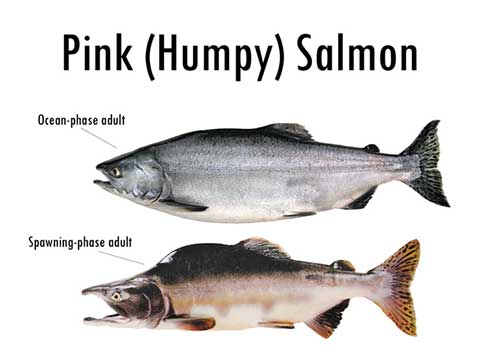Pink salmon are native to Pacific Ocean waters but have spread to parts of northern Europe after being released into rivers in Russia in the 1960s.
Fisheries Management Scotland said 2017 saw "unprecedented numbers" of pink salmon in UK rivers.
It said due to the fishes' two-year life cycle the salmon could be seen again this year.
The mouth of a pink is white, but the gums and tongue are black,. It does not have “teeth” on its tongue. The pink salmon tail is covered with large oval spots.
If you are confident that you have captured a pacific pink salmon the fish should be humanely despatched and retained.
If you have killed and retained a pink salmon, please immediately contact the secretary who will contact the Tay district salmon fishery board, who may arrange for further inspection and analysis, if necessary. It would be very helpful if the following information could be recorded: • date of capture or sighting, • location of capture (grid reference if possible) and details of the site, • method of capture, • sex of fish.
Please be vigilant for any early or unusual spawning activity – particularly during August and September, when any pink salmon present are likely to be active in spawning areas – shallow, gravelly glides and runs. Any suspected activity should be reported as above.












